Types of Energy Storage Methods – Renewable energy sources aren’t always available, and grid-based energy storage directly tackles this issue. It is not always possible for the sun to shine. It is not always the case that the wind blows.
Energy storage technologies allow energy to be stored and released during sunny and windy seasons. Although it may appear to be a simple concept, energy storage can be accomplished in a variety of ways.
History of Energy Storage Methods
Electricity was largely generated by burning fossil fuels in the grid of the twentieth century. Less fuel was burned when less power was required. Hydropower is the most frequently used mechanical energy storage method, having been in use for centuries. For almost a century, large hydroelectric dams have served as energy storage facilities. Concerns about air pollution, energy imports, and global warming have sparked an increase in renewable energy sources, including solar and wind power.
Wind power is unpredictable, and it may generate when no more power is required. Solar power varies depending on cloud cover and is only accessible during daylight hours at best, but demand generally peaks after sunset. As the renewable energy industry begins to contribute a larger portion of overall energy consumption, interest in storing power from these intermittent sources develops.
Off-grid electrical use was a small sector in the twentieth century, but it has grown in the twenty-first. Throughout the world, portable devices are in use. Solar panels are now widely used in rural areas all over the world. Access to electricity is now mostly a matter of economics and financial viability rather than technological considerations. Electric vehicles are gradually displacing vehicles with internal combustion engines. Long-distance transportation without using fuel, on the other hand, is still in the works.
Various Type of Energy Storage Methods
Compressed Air Storage
When used in conjunction with a wind farm, a compressed air energy storage system pulls in air and creates a high-pressure system in a series of enormous underground chambers. When wind speed slows down or demand for electricity increases, pressurized air, usually combined with a little natural gas, is discharged to power turbines or generators.
For more information about compressed air storage systems, visit this link.
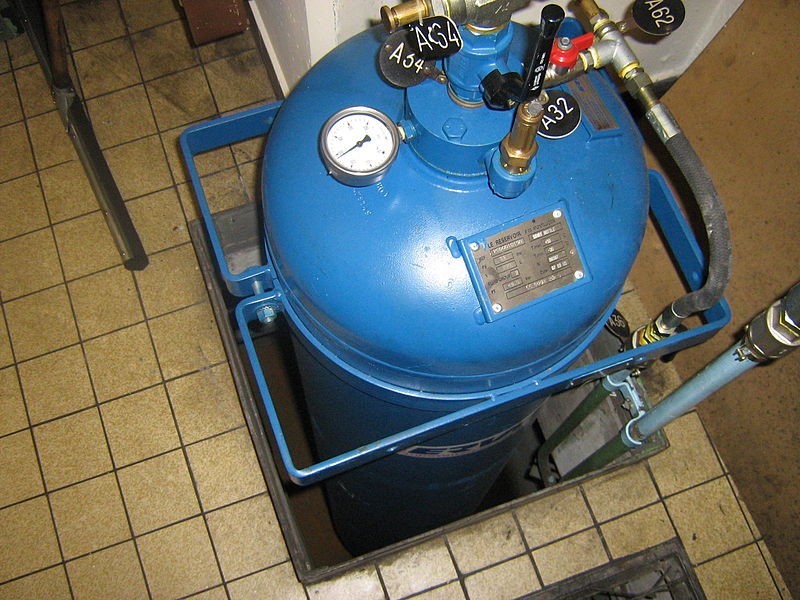
Pumped-Storage Hydroelectricity
Pumped-storage is a common type of energy storage. Hydroelectric power is generally used to store excess grid power. Electricity from the grid is often used to pump water up into a tank or lake when demand is low. Water is permitted to flow from an upper reservoir to a lower reservoir when demand spikes. The water travels through turbines as it descends to a lower elevation, creating power.
Advanced Rail Energy Storage
Advanced Rail Energy Storage is a method that provides rail cars to store electricity and is developed by a California company. Excess grid energy is used to power axle-drive motors on rail carriages, which push mass uphill and against gravity to a storage yard.
The rail trains proceed back downhill to gather electricity from the system. This time, the wheels operate as mini-generators, recharging the grid with electricity.
Flywheel Energy Storage
Flywheel energy storage devices turn electricity into kinetic energy in the form of spinning wheels, which can then be used to store grid energy. To avoid energy loss, the wheels are kept in a frictionless vacuum by a magnetic field, and the spinning can be reduced in a way that creates electricity when power is required.
This system has several advantages over conventional energy storage systems, such as little maintenance, long life, and little environmental effect.
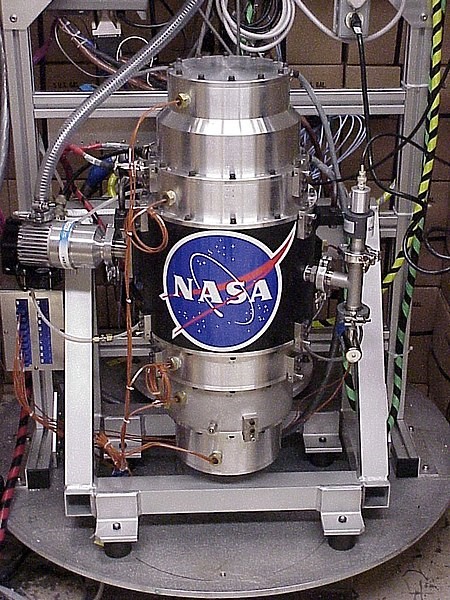
Lithium-Ion Battery Storage
Experts and government are investing substantially in the creation of massive lithium-ion batteries to store power for when supply outpaces demand for electricity, which is probably the simplest concept for consumers to grasp.
Lithium batteries were not designed for industrial usage, and their widespread grid-based adoption confronts three key challenges: cost, the fact that they can pose a safety threat, and their short lifespan.
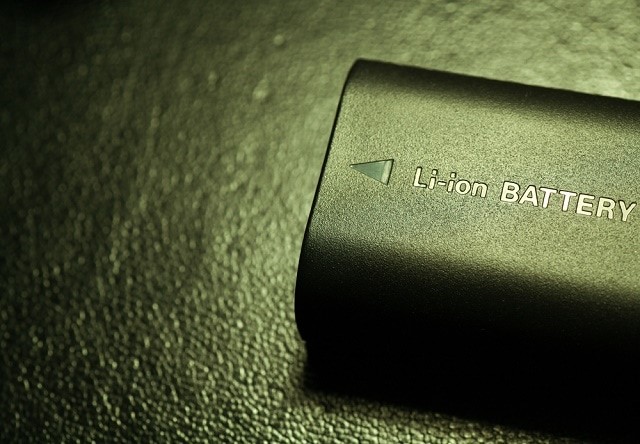
Liquid Air Energy Storage
Excess grid electricity is used to chill ambient air to the point where it becomes a liquid, which is known as Liquid Air Energy Storage, or LAES. The liquid air is turned back to gas by exposing it to ambient air or using waste heat to harvest electricity from the system. The turbines are then powered by the expanding gas.
Pumped Heat Electrical Storage
Pumped Heat Electrical Storage reserves electricity by using it to power a heat pump that transports heat from a “cold store” to a “hot store,” similar to how a refrigerator does. The heat pump is switched to recover the energy, taking it from the hot store and placing it in the cold store. This produces mechanical work, which is used to power a generator.
One of the benefits of this system over others is that it reacts considerably faster than other grid storage systems, taking action within minutes.
Redox Flow Batteries
Redox flow batteries, unlike lithium-ion batteries, which are solid-state batteries, store excess grid energy in liquid electrolyte solutions through chemical reduction and oxidation reactions.
Redox batteries have a significant advantage over lithium-ion and other solid-state batteries in terms of adaptability. A redox flow battery’s power and energy ratings can be easily changed for a specific application by simply adjusting the stack size or the size of the storage tanks containing the electrolyte solutions.
Superconducting Magnetic Energy Storage
A superconducting magnetic energy storage device stores electricity as a magnetic field rather than chemical, kinetic, or potential energy. The field is produced by current flowing through a superconducting coil that has been cooled below a critical temperature. Maintaining the electromagnetic field requires very little energy, which is released by discharging the coils.
This method has the advantage of providing instantaneous discharge capability.
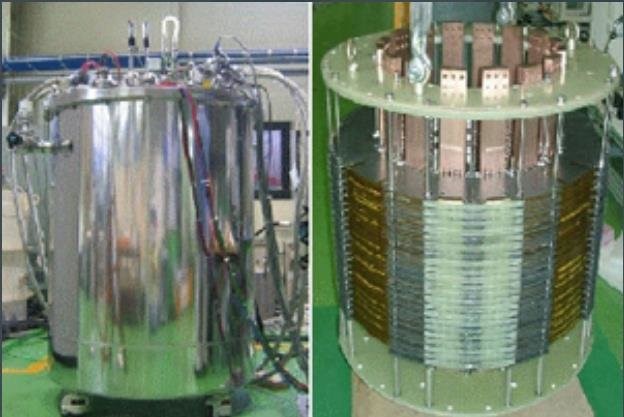
Methane
German researchers have devised a method for producing methane from the waste products of biomass gasification. Methane, being a gas that may be burned to power turbines, acts as an energy storage medium in this scenario. Existing natural gas infrastructure could simply pipe or convey the energy stored as methane.
Applications of Energy Storage Systems
Mills
Controlling streams to drive water mills for grain processing or powering machines was a common application prior to the industrial revolution. As a result, reservoirs and dams were built in complex systems to store and release water (and the potential energy it contained) as needed.
Homes
Given the growing relevance of distributed renewable energy generation (particularly photovoltaics) and the significant amount of energy consumption in buildings, home energy storage is likely to become more common. Energy storage is required to achieve greater than 40% self-sufficiency in a photovoltaic-equipped household. Several companies make rechargeable battery systems for storing energy, which are typically used to store excess energy from residential solar or wind generation. Li-ion batteries are now preferred over lead-acid batteries for household energy storage due to their same cost and superior performance.
The Tesla Powerwall is available in two variants from Tesla Motors. For backup applications, there is a 10 kWh weekly cycle version, and for daily cycle applications, there is a 7 kWh version. A restricted version of the Tesla Powerpack 2 cost $398(US)/kWh in 2016, storing electricity worth 12.5 cents/kWh, making a positive return on investment unlikely unless energy prices rise beyond 30 cents/kWh.
The HUB 120 and SB20 are two models of RoseWater Energy’s “Energy & Storage System.” Both variants produce 28.8 kWh, allowing them to power larger homes or light commercial buildings while also preserving unique installations. A pure 60 Hz Sine wave, zero transfer time, industrial-grade surge protection, renewable energy grid sell-back, and battery backup are all included in the system.
Enphase Energy has unveiled an integrated solution that allows homeowners to store, monitor, and manage electricity in their homes. The system has a 1.2 kWh energy storage capacity and a 275W/500W power output.
Although less versatile than batteries, storing wind or solar energy with thermal energy storage is significantly less expensive. A simple 200-litter electric water heater can store about 12 kWh of energy, which can be used to supplement hot water or heat a room.
Home-generated electricity can be sold to the grid using a grid-tie inverter without the use of batteries for financial reasons in regions where net metering is available.
Grid Electricity and Power Stations
Renewable Energy
Construction of salt tanks enables efficient thermal energy storage, allowing electricity to be generated after the sun sets and production are planned to meet demand. The Solana Generating Station, with a capacity of 280 megawatts, is meant to store energy for six hours. Over a year, the facility can generate around 38 percent of its rated capacity.
The 150 MW Andasol solar power plant in Spain is a parabolic trough solar thermal power plant that stores energy in molten salt tanks so it can generate electricity even when the sun isn’t shining.
Hydroelectric dams are the largest source and largest storage of renewable energy. Between the dry and wet seasons, a big reservoir behind a dam can hold enough water to average the annual flow of a river. A huge reservoir can store enough water to keep a river’s flow consistent between wet and dry years. While a hydroelectric dam does not instantly store energy from intermittent sources, it does help to balance the grid by reducing production and retaining water when solar or wind power is generated. If the region’s hydroelectric capacity is exceeded by wind or solar power, another source of energy is required.
Variable power is produced by several renewable energy sources, including solar and wind. Storage systems can help to balance out the supply and demand imbalances that this produces. Electricity must be used promptly when it is generated or transformed into storable forms.
Pumped-storage hydroelectricity is the most common technique of electrical grid storage. Norway, Wales, Japan, and the United States have used elevated geographic features to create reservoirs, which are filled with electrically powered pumps. When electricity is required, the water flows through generators, which transform the gravitational potential of falling water into electricity. Pumped storage in Norway, which obtains almost all of its electricity from hydro, has a capacity of 1.4 GW at the moment, but with a total installed capacity of approximately 32 GW and 75% of it being regulable, it can be greatly enlarged.
Pumped-storage hydroelectric dams, rechargeable batteries, thermal storage, such as molten salts, which can store and release large amounts of heat energy efficiently, compressed air energy storage, flywheels, cryogenic systems, and superconducting magnetic coils are all examples of storage that produce electricity.
The Bonneville Power Administration in the Northwestern United States established an experimental initiative in 2011 to absorb extra wind and hydropower produced at night or during stormy periods with high winds. Home appliances absorb excess energy by heating ceramic blocks in customized space heaters to hundreds of degrees and increasing the temperature of modified hot water heater tanks when they are controlled from a central location. The units supply home heating and hot water as required after charging. A strong 2010 storm overproduced renewable energy to the point where all conventional power sources were shut down, or in the event of a nuclear power plant, decreased to its lowest permissible operating level, leaving a huge area running almost entirely on renewable energy.
Another advanced method, which was utilized at the old Solar Two project in the United States and the Solar Tres Power Tower in Spain, stores thermal energy captured from the sun in molten salt before converting and dispatching it as electrical power. The technology heats molten salt by pumping it through a tower or other specific conduits. The solution is kept in insulated tanks. Water is converted to steam, which is then pumped into turbines to generate electricity.
Air Conditioning
For air conditioning, thermal energy storage (TES) can be used. It’s most commonly utilized to cool huge structures and/or clusters of smaller buildings. Peak electrical demand is primarily caused by commercial air conditioning systems. Thermal storage was deployed in more than 3,300 buildings in more than 35 countries in 2009. It works by chilling material at night and then utilizing it for cooling during warm days.
Ice storage is the most preferred method since it takes up less space than water and is less costly than fuel cells or flywheels. A typical chiller is used to create an ice pile in this application. During the day, water circulates through the pile to chill water that would otherwise be the chiller’s daytime output.
By running the chillers nearly 24 hours a day, a partial storage system reduces capital investment. They make ice for storage at night and chill water during the day. The creation of chilled water is aided by water moving through the melting ice. A system like this produces ice for 16 to 18 hours a day and melts ice for six hours. Because the chillers are only 40 percent to 50 percent the size required for a traditional, no-storage design, capital costs are minimized. Typically, enough storage is sufficient to store half a day’s worth of available heat.
During peak load hours, a full storage system turns off the chillers. Because a system requires larger chillers and an ice storage system, capital expenditures are higher.
When electricity utility rates are lower, this ice is formed. Off-peak cooling solutions might help you save money on your energy bills. In addition, the Leadership in Energy and Environmental Construction (LEED) program was created by the United States Green Building Council to encourage the design of low-impact buildings. Off-peak cooling could assist in achieving LEED certification.
Heating thermal storage is less prevalent than thermal cooling storage. However, the storage of solar heat for use as nighttime heating is an example of thermal storage.
Technical phase change materials (PCMs) can also store latent heat. To control room temperatures, these can be encased in wall and ceiling panels.
Transport
The most popular kind of energy storage for transportation is liquid hydrocarbon fuels, followed by the growing use of Hybrid Electric Vehicles and Battery Electric Vehicles. To prevent manufacturing greenhouse gases, other energy carriers like hydrogen can be employed.
Electricity is required for public transportation systems such as trams and trolleybuses; however, due to their variable mobility, obtaining a consistent supply of electricity from renewable sources is difficult. Photovoltaic systems mounted on building roofs can be utilized to power public transportation systems during periods when there is a spike in need for electricity and other sources of energy are scarce. Ferries and airplanes are two examples of upcoming transportation system transitions where electric power supply is being examined as a viable option.
Electronics
Capacitors are commonly employed in electrical circuits to block direct current while allowing alternating current to flow through them. They smooth the output of the power supply in analog filter networks. They use resonant circuits to tune radios to certain frequencies. They regulate voltage and power flow in electric power transmission systems.
Economics of Energy Storage Systems
Energy storage’s economics are highly dependent on the reserved service required, and numerous unknown factors influence its profitability. As a result, not every storage technology is technically and economically feasible for storing several MWh, and the best energy storage scale is market and area-dependent.
Moreover, ESS are influenced by several risks, such as:
1) Risks associated with various technologies in terms of technology and economics;
2) The factors that affect the power supply system are known as market risks;
3) Policy and regulation and risks.
As a result, traditional investment appraisal methodologies based on deterministic Discounted Cash Flow (DCF) are insufficient to assess these risks and uncertainties, as well as the investor’s flexibility to cope with them. As a result, the literature suggests using the Real Option Analysis (ROA), which is a useful tool in uncertain situations, to assess the value of risks and uncertainties.
Curtailment avoidance, price arbitrage, grid congestion avoidance, and carbon-free energy delivery are all factors considered in the economic value of large-scale applications (including pumped hydro storage and compressed air). For example, according to a scientific assessment by the Carnegie Mellon Electricity Industry Center, batteries could meet economic goals if their capital costs were $30 to $50 per kilowatt-hour.
Energy storage on energy invested (ESOI), which is the quantity of energy that can be collected by a technology divided by the amount of energy needed to develop that technology, is a metric of energy efficiency of storage. The greater the ESOI, the more energy-efficient the storage technique. This is roughly 10 for lithium-ion batteries and roughly 2 for lead-acid batteries. Pumped hydroelectric storage, for example, has a greater ESOI than other types of storage, such as 210.
Electricity Storage in the United States
As of March 2018, the United States had more than 25 gigawatts of electrical energy storage capacity, according to the Department of Energy. However, 94 percent of that total was in the form of pumped hydroelectric storage, with the majority of that capacity added in the 1970s. As indicated in the graph below, the remaining 6% of storage capacity is made up of a battery, thermal storage, compressed air, and flywheels.
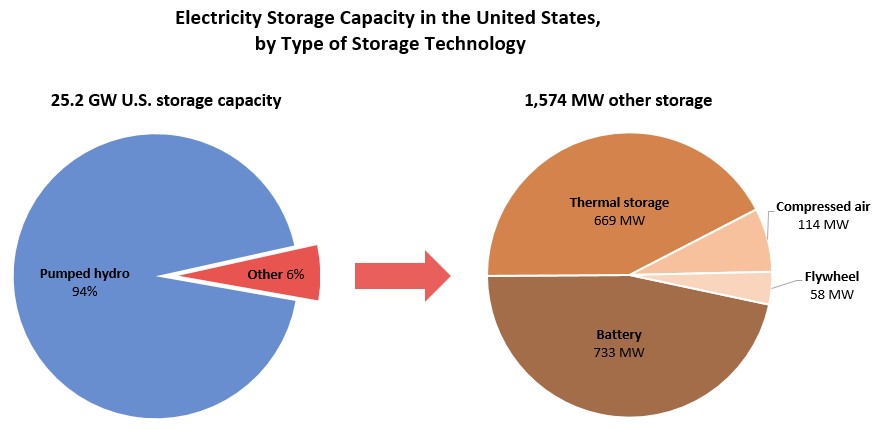
Environmental Impacts of Electricity Storage
Electricity storage can have a positive impact on the environment in the long run. Electricity storage, for example, can be utilized to help the system integrate more renewable energy. Electricity storage can also help power plants run more efficiently and limit the use of less efficient generating units that would otherwise only be used during peak hours. Furthermore, the additional capacity provided by electricity storage might help to postpone or eliminate the need for new power plants or transmission and distribution facilities.
The type and efficiency of storage technology will determine the potential negative effects of power storage. Batteries, for example, contain raw materials like lithium and lead, and if they are not properly disposed of or recycled, they might constitute an environmental threat. Furthermore, throughout the storing procedure, some electricity is wasted.
Buy Equipment or Ask for a Service
By using Linquip RFQ Service, you can expect to receive quotations from various suppliers across multiple industries and regions.
Click Here to Request a Quotation From Suppliers and Service Providers
Read More on Linquip
- Types of Solar Energy: Learn the Basics, Get the Most Out of It!
- Types of Solar Panels: A Simple Guide Assisting You to Have Better Choice
- Different Types of Renewable Energy: An Easy-to-Understand Guide
- Flywheel Energy Storage System
- Ways to Conserve Energy: General and Practical Solutions for Saving Energy
- Liquid Air Energy Storage
- What is Pumped Storage Hydropower?

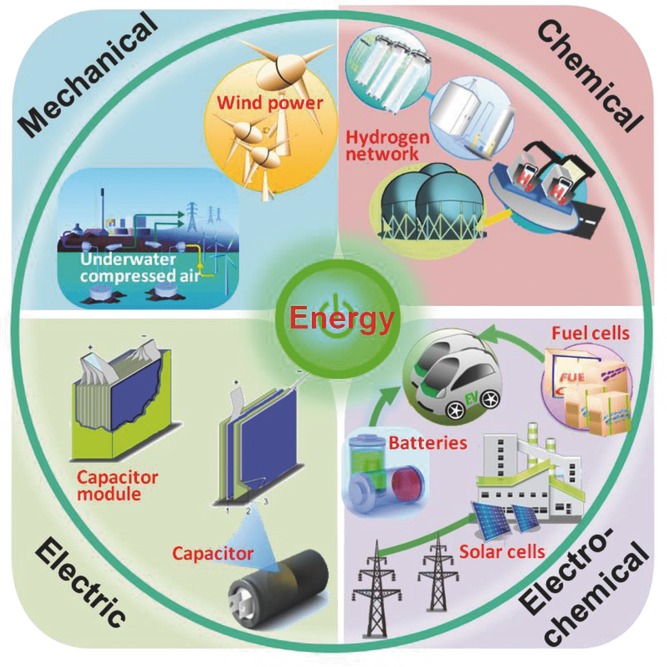


IDEAL DESCRIPTION I EVER SEEN THANKS.
Thanks for visiting our website and leaving your comment, Clemente! We hope to hear from you again in our other posts.